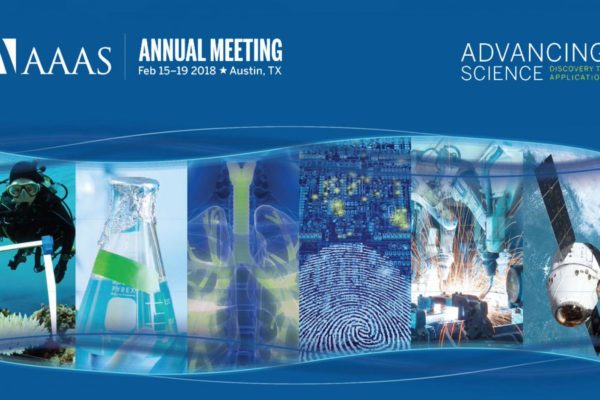Researchers from across the world are coming to Austin this week for one of the most important scientific gatherings of the year – the 2018 AAAS (American Association for the Advancement of Science) Annual Meeting. Among them are some remarkable undergraduate students from The University of Texas at Austin who will be presenting original research at the conference.
These students will stand alongside pre-eminent scientific leaders to discuss the latest developments in science, technology and policy.
They are also competing in an international student poster session that includes both graduates and undergraduates. The winner receives a cash prize and his or her name and research printed in the prestigious journal Science.
Meet five UT undergraduate researchers who are getting a head start on changing the future of science.
Kavya Rajesh, Sophmore chemistry major

Rajesh’s research could one day provide a better way to preserve tissues and organs for transplants. It is currently not possible to freeze organs and tissues with conventional freezing methods because of ice formation. As water freezes into ice and expands, the cell membranes rupture and tissues die. Rajesh is studying the thermal denaturation of a protein called lysozyme in an effort to solve this problem.
Paper: Lysozyme Denaturation in DMSO Mixtures
“Research has given me the opportunity to give many presentations including the national American Chemistry Society conference this spring, which is something I would never have imagined,” said Rajesh. “Falling in love with research has made me consider pursuing a Ph.D. or an M.D./Ph.D. in the future.”
Brittany Sandoval, Junior biology major

In healthy human cells, sometimes DNA strands accidentally break. Fortunately, cells have safety mechanisms that are supposed to repair those breaks so that when the cells divide and pass on their DNA, new mutations aren’t passed on. Cancerous cells often lack these repair mechanisms, allowing them to mutate and spread faster. Sandoval is searching for drugs that can stop cancer by making these cells susceptible to the repair mechanisms.
Paper: The Inhibition of ATM Kinase Activity by the CDX2 Transcription Factor
“This experience as an undergraduate researcher has made me expand my goals,” said Sandoval. “I now serve as a peer mentor in my Freshman Research Initiative stream and have done so for three semesters.”
Megan Chan, Junior biology major

How similar are a human and a chicken? Or a human and a frog? Through data visualization and computational analyses, Chan is determining whether similar points of gene expression can be confirmed across the development of vertebrates, animals that have a backbone.
Paper: The Hourglass Project
“Participating in research was great because it allowed me to integrate computer science with my biology and chemistry knowledge,” said Chan.”It helped me find my major, computational biology.”
Lavender Hackman, Senior nutrition major

Annexin proteins can be found in every animal, plant and fungi. These membrane-binding proteins play an important role in the cell life cycle.The goal of Hackman’s research is to understand how certain proteins are allowing the Annexin protein to function properly and its role in cell signaling and stress responses in plants.
Paper: What do Death Zones have to say about the Annexin protein?
“Doing research has allowed me to find my ‘niche’ at UT and contribute my skills to something that I really enjoy outside of just taking classes,” said Hackman. “I didn’t plan on pursuing a career in research when I first came to UT, but my experiences as an undergraduate researcher have opened that door for me, and I am definitely interested in pursuing a career in research moving forward.”
Mireya Almaraz, Junior biochemistry major

Prompt diagnosis is important to tuberculosis control, both for treating the individual and for public health intervention to reduce further spread in the community. With the support of the Gates Foundation, Almaraz developed a method that would cut final diagnosis for tuberculosis to just one visit.
Paper: Developing an Early Detector for Tuberculosis
“Research really makes you think at a different level and approach a problem with a new perspective,” said Almaraz. “But the challenges that go behind the research is something I really enjoyed.”




